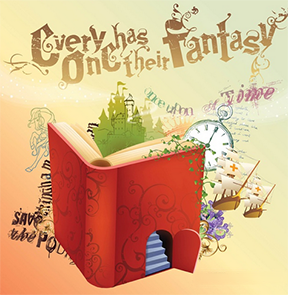 A writer’s most prized possession is his or her own unique writing style.
A writer’s most prized possession is his or her own unique writing style.
Raymond Chandler
The accomplished American novelist and screenwriter, admitted: “The most durable thing in writing is style, and style is the single most valuable investment a writer can make with his time.”
The term “style” stems from the Latin word “stilus.” The “stilus” represented a
tool for writing on the waxen tablets of the Romans; it had a pointy end for producing the imprint on the wax, and a rounded end for erasing.
We use the term “style” more freely now to imply any form of self-expression. In the literary context, it suggests “thoughtful, creative purpose.” Our purpose in writing a story (either fiction or non-fiction) is to trigger certain ideas to emerge in the readers’ minds. If our words trigger the right pictures and emotions in the readers’ minds at the right time, in the right places, we then know that we have strung our words together in the most ideal way—that is, we have placed the proper words in their proper places.
An aspiring writer may believe that a good writing style only involves: 1) a topic or theme to write about; and 2) a good vocabulary and a firm grasp of grammar to communicate the topic or theme. This belief is based on a misunderstanding of the interpretation of style.
In fact, the crucial element in style is neither a gift of good talent or the result of education and training—it is the resourcefulness to use words purposefully, dramatically, and figuratively.
A writing style that holds your attention and amuses your imagination is a reflection of the inner freedom and autonomy of the author who possesses the instrument of language. The author might use unique words to impact his end or he may choose common words, as Charles Dickens did, for instance; but what really brands a good writing style is the author’s own freedom, independence, and unique “inner” voice from the writing styles of other authors.
Recall a short story that consumed your interest when you read it. What element of the story actually held your interest? You might guess that it was the plot, or the characters, or the conflict. Perhaps you are correct. Read the story again. Notice the illusive use of words to produce just the right feeling. Sometimes in refining your style, you also refine your idea simultaneously. Refine the style, and you refine the story.
A key element in developing a good writing style is that you abandon worn-out phrases. Everything relies on the idea, and how you flesh out that idea uniquely and vibrantly so that you engage readers. If you have the habit of using trite and threadbare phrases, then teach yourself to think in words, not in lines, until you can rely on your subconscious sense to discriminate faithfully.
What about writing for a business? To maintain a consistent voice and style, try using a content tool like Writer.com, which offers a style guide feature to keep content on brand.
Billy Collins
Poet Laureate of the United States from 2001 to 2003, said: “You come by your style by learning what to leave out. At first you tend to overwrite—embellishment instead of insight. You either continue to write puerile bilge, or you change. In the process of simplifying oneself, one often discovers the thing called voice.”
It’s very tricky to define “style” because writers often have their own opinions about it. Many times we can identify talented writers who’ve developed good writing styles because their styles emanate these four common qualities: 1) intelligence, 2) emotions, 3) creativity, and 4) aestheticism. These four innate qualities reveal the relationship between the writer and the way he or she writes. The quality of “aestheticism” is the personal imprint which a writer unavoidably brands on his or her stories.
Developing your own unique writing style develops over time. “Writing and reading are the only ways to find
your voice. It won’t magically burst forth in your poems the next time you sit down to write, or the next; but little by little, as you become aware of more choices and begin to make them—consciously and unconsciously—your style will develop,” said Dorianne Laux, author of The Poet’s Companion: A Guide To The Pleasures Of Writing Poetry.
Final Tips
- Use different lengths of sentences to create a better reading experience.
- Strengthen your writing with colorful verbs.
- Show readers the action; don’t tell readers about it.
- Craft sentences that paint a picture of what’s happening in your story.



